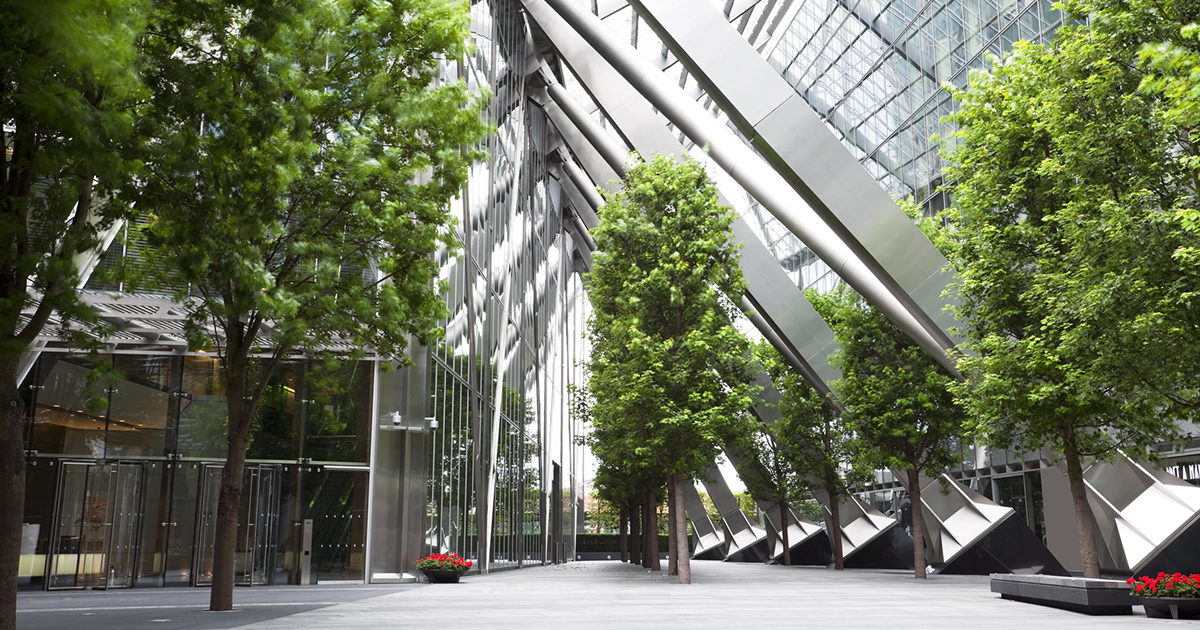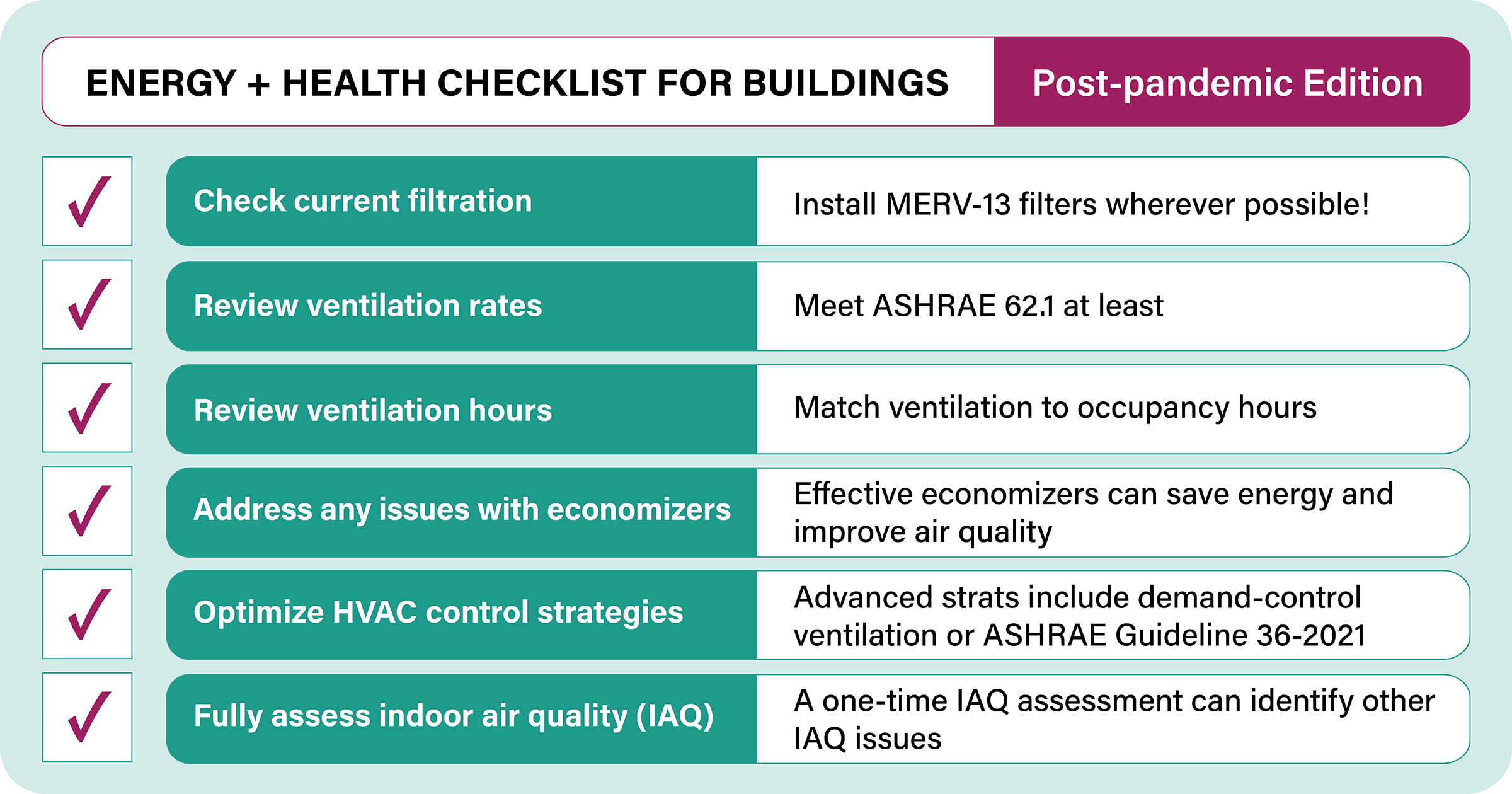
We can make commercial buildings safer in the post-pandemic future
The COVID-19 pandemic changed how people think about buildings. Suddenly the environments where we work, live, and play seemed rife with invisible hazards. But look at it this way: the pandemic also made us acutely aware that how we operate our buildings has a direct effect on people's health and well-being.
Among other factors, the pandemic stirred up a renewed focus on building ventilation. Starting in 2020, health organizations published recommendations to improve ventilation to prevent transmission of airborne diseases. Some building operators enacted those methods; some went even further to protect their occupants’ health. Others did their best to adapt to ever-changing variables, such as the uncertainty as to whether people would ever return to the office.
In a recent study for Xcel Energy, we set out to identify changes in commercial building operation during the COVID-19 pandemic — and how it might teach us to optimize both energy use and our health in the post-pandemic future.
How has building behavior changed during the pandemic?
To understand building operation practices over the last several years, we went straight to the source: building owners and operators. We interviewed Xcel Energy customers in both Colorado and Minnesota during spring 2022, a period in which building occupancy was broadly starting to climb as many people returned to the office.
That survey data gave us a qualitative idea of what changes building operators had made, especially in cold and mountain climates. We also compared the responses to operating best practices and ran energy models to quantify the new behavior's impact on energy use.
We found several ways that existing energy efficiency programs could influence building owners to operate more efficiently while continuing to focus on occupants' health.

Click here for a bigger version of this checklist.
Finding and Recommendations:
Most building owners we interviewed didn't or weren't able to implement all the best practices due to cost or technical challenges — or a lack of awareness.
Clear up confusion on MERV-13 filters
During our study, many people were surprised to hear that the simple act of upgrading the HVAC filters can help keep viruses out of the air. Existing research and our own modeling has shown that filters with a Minimum Efficiency Reporting Value (MERV) rating of 13 or higher are just as effective at reducing pathogens as ventilating a building with 100% outdoor air. Upgrading to MERV-13 filters is an easy, cost-effective way to improve IAQ — including airborne pathogens — in many buildings.
Better information = better ventilation
Ventilation strategies have a major impact on a building’s energy use. In the interest of keeping people safe, many building owners still relied on ineffective or outdated ventilation strategies. In March 2020 – that is, in the scramble of the early pandemic — ASHRAE recommended that buildings run their HVAC 24/7 to keep them as ventilated as possible. By October 2020 ASHRAE had removed that recommendation in favor of a nightly flush. Still, by March 2022 some building owners were running their HVAC around-the-clock or maintaining 100% operations no matter how many people were coming into the office.
It simply isn't very efficient (or affordable) to ventilate a building all the time or with 100% outside air. Along with basic strategies, such as matching ventilation hours to occupancy, building operators should make sure they adhere to the latest ventilation strategies to maintain indoor air quality — including ASHRAE Standard 62.1.
Make HVAC work smarter, not harder
Advanced HVAC control techniques can help building operators conserve energy by matching ventilation hours to a building’s variable occupancy. But many buildings don't have the ability to modulate ventilation in different zones or track occupancy in real-time.
To should provide more funding for people to upgrade their controls! Integrating networked lighting controls with HVAC is an effective method to boost efficiency and address variable occupancy concerns, but there are plenty of methods to give operators more agency over their building’s controls.
Give your building a check-up
Most buildings could benefit from a separate, one-time assessment of indoor air quality. Programs should consider integrating health factors into existing building audit and assessment programs or make it easier for building owners to hire an outside organization to conduct a health assessment.
The bottom line: Energy efficiency programs can meet the moment and help existing buildings evolve into safer, healthier environments. There are many ways to help operators implement measures that address indoor air quality without unnecessarily penalizing energy use.
What we still need to learn
We know the COVID-19 pandemic has affected how we both operate and occupy our buildings. But we still don't know enough.
According to our literature review, there aren't many studies that have looked at operating trends during the pandemic. Before we can see the full picture of the post-pandemic skyline, we need to know what's going on inside the buildings.
In short, we need more studies. We need surveys of many more building owners and operators to understand how they've changed their practices and policies during the pandemic. We especially need to know what they are — and aren't — able to do themselves to ensure people's safety without increasing their energy costs.
COVID-19 was a once-in-a-lifetime challenge that changed the way we view public health policy, probably forever. Now we have an equally unprecedented opportunity to make our buildings healthier and save energy to meet yet another extraordinary crisis: climate change.